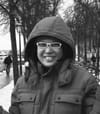MUZIUM & GALERI TUANKU FAUZIAH (MGTF) began approximately 50 years ago after Universiti Sains Malaysia (USM) introduced the Fine Arts programme, a pioneering move among Malaysia’s higher education institutions. Since then, USM has been acquiring artefacts and various works of art.
The museum and art gallery officially opened in 1982 but was formally inaugurated as MGTF in 2007. It is known to many as a university museum. However, since 2021, MGTF’s curatorial team has been curating engaging experiential visits to promote the paradigmatic shifts advocated by the director, Hasnul Jamal Saidon. Striving to reinterpret the museum’s role bMUZIUM & GALERI TUANKU FAUZIAH (MGTF) began approximately 50 years ago after Universiti Sains Malaysia (USM) introduced the Fine Arts programme, a pioneering move among Malaysia’s higher education institutions. Since then, USM has been acquiring artefacts and various works of art.





.jpg)
